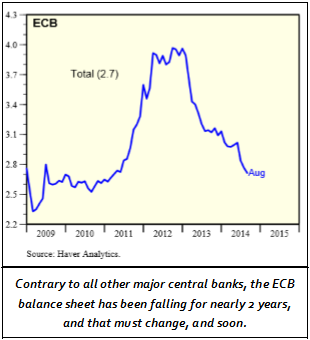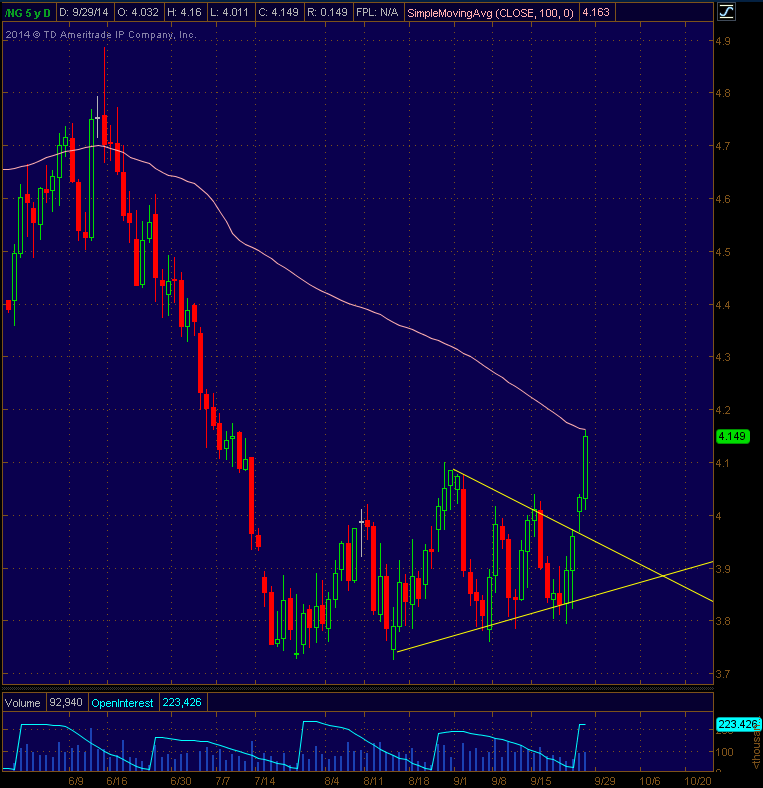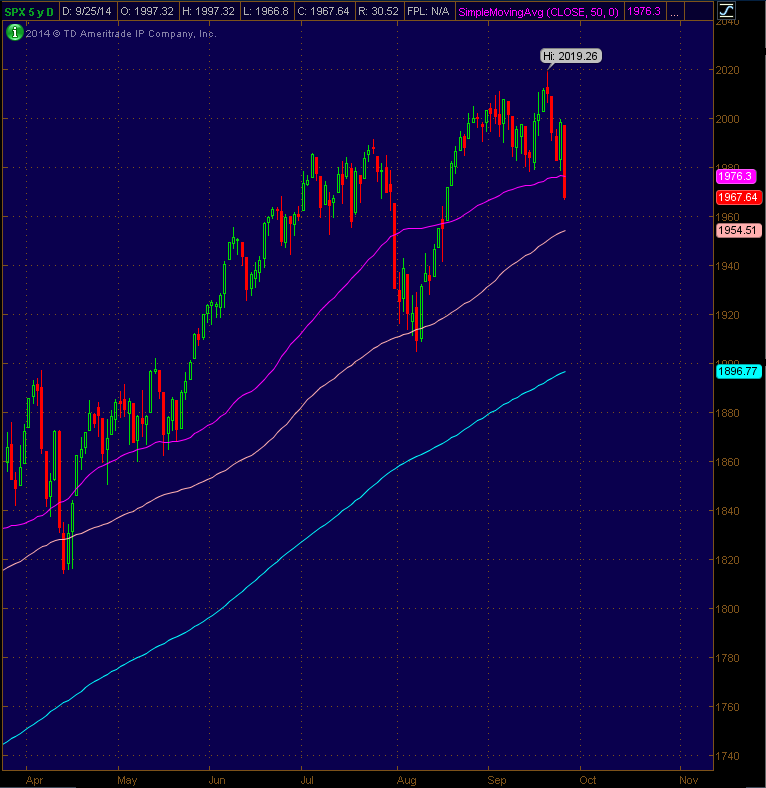Is Dis-Inflation a Worry?
Is Dis-Inflation a Worry?
Since the surprisingly weak CPI report earlier in September, there’s been a subtle but growing concern about the return of dis-inflation—not in the EU, but in the U.S. And, recently we’ve seen a fair bit of financial media coverage detailing the fall in market inflation expectations—so I wanted to cover the topic and explain why we’re seeing that dip (it’s not entirely because the market is expecting dis-inflation).
Renewed worries about dis-inflation have come from three places:
First, commodity prices have utterly collapsed since earlier this summer, which obviously weighs on inflation statistics.
Second, despite the stock market reacting “dovishly” to the last Fed meeting, bonds and the dollar are beginning to price in the reality of a rising Fed Funds rate in mid-2015. Given the apparent lack of statistical inflation, the reality of a higher Fed Funds rate will dampen expectations for inflation 5 years out.
Third, and most-cited, both the 5- and 10-year Breakeven Inflation Rate have dropped precipitously over the past three months. (The breakeven inflation rate is the difference between the yield on a Treasury bill vs. the yield on the same-duration TIP. So, the 5 year-inflation break-even is the yield on the 5-year Treasury minus the yield on the 5-year TIP.)
These events have led some to become worried that the U.S. is about to go through another period of “dis-inflation.” If that does indeed happen, then stock prices will get hit—potentially hard (because the Fed is basically out of monetary bullets). It’s also led some to believe the Fed may end up being slightly more “dovish” than is currently expected.
But, yesterday we got some encouraging news on inflation. The August “Core PCE Price Index,” which is the Fed’s preferred measure of inflation, was unchanged from July, at a +1.5% increase year-over-year. Importantly, it didn’t confirm the drop we saw in CPI in August, and should help to alleviate some concerns about dis-inflation (this was underappreciated by the market yesterday).
Turning then to the “inflation breakeven,” with regard to the drop in the 5-year inflation breakeven, that number is very highly correlated to commodity prices. If you’ll look at a chart of the 5-year breakeven yield (link here), it started to decline very shortly after commodity prices began to collapse in late June. So, it would appear most of that has to do with commodity price declines (so it’s mostly a commodity phenomenon, not something more structural and worrisome).
The 10-year breakeven is a bit more worrisome, but if you look at that chart, what you’ll see is it really came for sale hard following the lackluster jobs report of August. What I think the 10-year is reflecting is the lack of wage inflation, as represented by the poor August jobs report. Remember, wage inflation begets real inflation, so until we start to see material wage inflation (which will come from further labor market improvement), expect the 10-year inflation expectations to remain relatively subdued.
Bottom line, dis-inflation is a background risk we need to monitor here in the U.S.—but at this point the low inflation readings seem to be more a product of commodity price declines and sluggish wage inflation … not an indicator that the market’s fundamental outlook on inflation going forward has materially changed.
This was an excerpt from a recent edition of the Sevens Report, the only daily publication that provides you with everything you need to know about the markets, by 7:00 AM each morning, in 7 minutes or less. To try the Sevens Report free for two weeks, simply sign up on the right hand side of this page.


